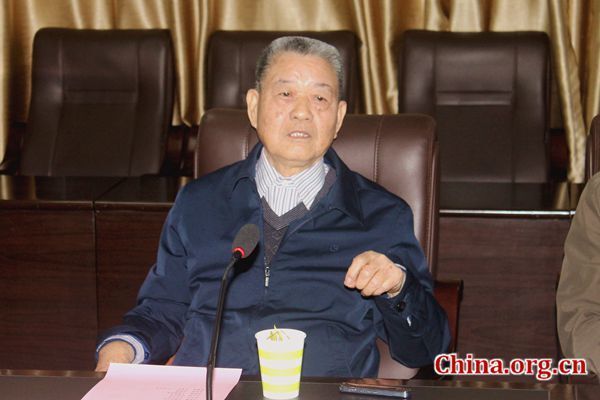A trail blazer of China's hybrid rice research
- By Mi Xingang
 0 Comment(s)
0 Comment(s) Print
Print E-mail China.org.cn, November 21, 2019
E-mail China.org.cn, November 21, 2019

"As an agriculture researcher, my only goal is to improve people's livelihood," said Yan Longan, a renowned hybrid rice expert and academician of the Chinese Academy of Engineering, during an interview with China.org.cn on Oct. 26.
Being a specialist on crop genetics and breeding, Yan has spent over 50 years on hybrid rice research, application and promotion.
Born into a poor family in 1937 in a remote village of Pingxiang city, Jiangxi province, he experienced the life of privation and the torture of near starvation, which made him determined to see that everyone could have sufficient food when he grew up.
After being enrolled in the Jiangxi Agricultural College in 1958, he began to concentrate on agricultural science study and took immense interests on genetics. "Work hard and try to improve rice yields," Yan recalled his father's expectations towards him then. Four years of study under harsh conditions strengthened his determination to conquer poverty and starvation.
After graduation in 1962, Yan conducted research on dwarf rice breeding in Pingxiang and bred several improved varieties. In 1970, he turned to hybrid rice research and the next year, he was selected to follow Yuan Longping, who had initiated China's rice heterosis application research in the 1960s, for further study at the Nanhong Farm in Hainan province.
He took part in the selection and breeding of the rice sterility line. In 1972, after an arduous endeavor, Yan became China's first researcher to succeed in breeding the Wild Aborted Type Indica Male Sterile Line -- Zhenxian 97, with epoch-making significance in realizing the matching of "three lines," namely sterile, maintainer and restorer lines, in China's hybrid rice breeding.
As for the hard process of breeding the Zhenxian 97, Yan recalled as follows: "My colleague and I got 48 seeds after pollination for over 300 spikelets under the scorching sun in Hainan and brought them back to Pingxiang. The next March, we sowed them, but seven days later, nothing happened. We dug them out and found they were all intact."
Yan felt so confused. However, after consulting experts, he realized they might have a longer dormancy period. He recalled with excitement: "Eventually, we cleared all of them, covered them with moist cotton and plastic, and put them on pockets of our underwear. To our great surprise, a further seven days later, all of them sprouted."
Among the same type, the sterile line of Zhenxian 97 has been applied in production for the longest period as it's still used today; it can create matching combinations in the largest number; its promoted planting area is also the largest and its adaptability is the strongest, said Yu Chuanyuan, current vice-president of the Jiangxi Academy of Agricultural Sciences.
According to Ministry of Agriculture statistics, from 1982 to 2003, the Xianyou series of hybrid rice developed by the Zhenxian 97 was promoted in fields across China totaling 124.93 million hectares, accounting for 47.59% of the total hybrid rice planting area in the country.
It helped increase rice output by 187.44 billion kilograms during this period. Yan made a significant contribution to food security of China, according to Yu.






Go to Forum >>0 Comment(s)